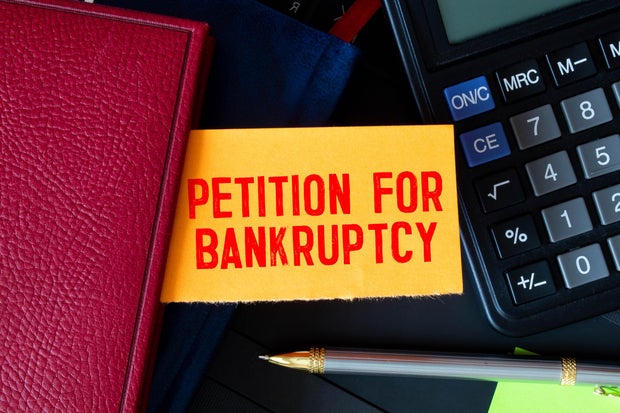Getty Images/iStockphoto
As 2025 winds down and the holiday season looms, millions of Americans are confronting an uncomfortable truth: Their debt has become unmanageable over the past year. And, that makes sense. Not only is high and sticky inflation eating away at most people’s budgets, but credit card balances are at historic highs right now, too. And, with interest rates still elevated, the minimum payments barely make a dent in what’s owed. So, those credit card charges, which may have started as a temporary way to cover the higher cost of groceries, gas and rent, have now spiraled into a serious financial crisis.
When this happens, the idea of filing for Chapter 13 bankruptcy can feel like a lifeline for those who want to avoid selling off their assets but need serious help reorganizing their debts. Unlike Chapter 7, which wipes out debts by liquidating certain assets, Chapter 13 allows you to keep your home and car while setting up a structured repayment plan. But here’s the catch: You’re committing to court-supervised payments for the next several years, and how much you’ll actually pay isn’t always clear, at least initially.
So, if you’re exploring this option as you face down another year of financial strain, understanding exactly how a Chapter 13 payment plan works isn’t just helpful. It’s essential. Below, we’ll detail what you need to know.
Find out how you can get rid of your debt and get your finances back on track.
What is a typical Chapter 13 bankruptcy payment plan?
A Chapter 13 bankruptcy payment plan is essentially a court-approved budget that reorganizes your debts into a single monthly payment over three to five years. Think of it as a structured repayment program with legal protections. Once approved, creditors must stop collection efforts, and you gain time to catch up on secured debts like your mortgage or car loan.
There isn’t a standard amount you’ll pay, though. With Chapter 13, your payment obligation depends heavily on your income, expenses and the types of debt you owe. To determine the amount you’re responsible for, the bankruptcy court will examine your disposable income, which is what’s left after reasonable living expenses, and that becomes the foundation of your payment plan. If your income is below your state’s median, you might qualify for a three-year plan. Above the median? You’re typically looking at five years.
But here’s what makes Chapter 13 different from simply budgeting on your own: Not all debts are treated equally. Priority debts like recent taxes, child support and alimony must be paid in full through your plan. Secured debts, such as mortgage arrears or car loans, also get priority treatment. Unsecured debts like credit cards, medical bills and personal loans often receive only a percentage of what you owe.
In turn, your monthly payment can range from a few hundred dollars to several thousand dollars, depending on your situation. For example, someone earning $50,000 annually with significant expenses might pay $400 per month, while a higher earner with fewer allowable expenses could pay $1,500 or more. The trustee overseeing your case will review your proposed plan to ensure it meets legal requirements and represents your best effort to repay creditors.
Whatever the total ends up being, though, it’s important to note that you must keep up with these payments. Miss payments, and your case could be dismissed, leaving you right back where you started, except you will have lost months or years and potentially spent thousands of dollars in legal fees.
Explore the different debt relief options available to you here.
What other strategies should I consider to get rid of my debt?
Before committing to a multi-year bankruptcy plan, it’s worth exploring alternatives that might resolve your debt faster and with less impact on your credit. Here are a few strategies that may be worth considering instead:
- Debt settlement programs are offered through debt relief companies and the goal is to negotiate with your creditors to reduce your total balance, often by 30% to 50% or more. Unlike Chapter 13, these programs typically resolve your debts within a few years, and you’re not dealing with court oversight or a bankruptcy filing on your credit report for up to 10 years.
- Debt consolidation might be another option to consider if you have decent credit. By rolling multiple debts into a single loan with a lower interest rate, you simplify your monthly payments and potentially save thousands in interest charges. However, this strategy requires qualifying for a loan, which can be challenging if your credit score has already taken hits.
- Credit counseling and debt management could be another option worth pursuing. If you enroll in a debt management program, you’ll work with a credit counselor to put a firm repayment plan in place, and the credit counseling agency will try to negotiate lower interest rates and fees with your creditors. That lowers the cost of your debt, sometimes substantially, and also streamlines the repayment process.
The bottom line
A typical Chapter 13 bankruptcy payment plan requires steady monthly payments for three to five years based on your disposable income, with amounts varying widely depending on your financial situation. But while this route offers legal protection and allows you to keep your assets while catching up on debts, it’s a substantial commitment, one that stays on your credit report for years.
Before choosing this path, take time to explore the debt relief alternatives that might resolve your financial challenges faster and with less long-term impact. Whether you pursue bankruptcy or another debt solution, though, the most important step is taking action now rather than letting debt continue to control your life.




0 Comments